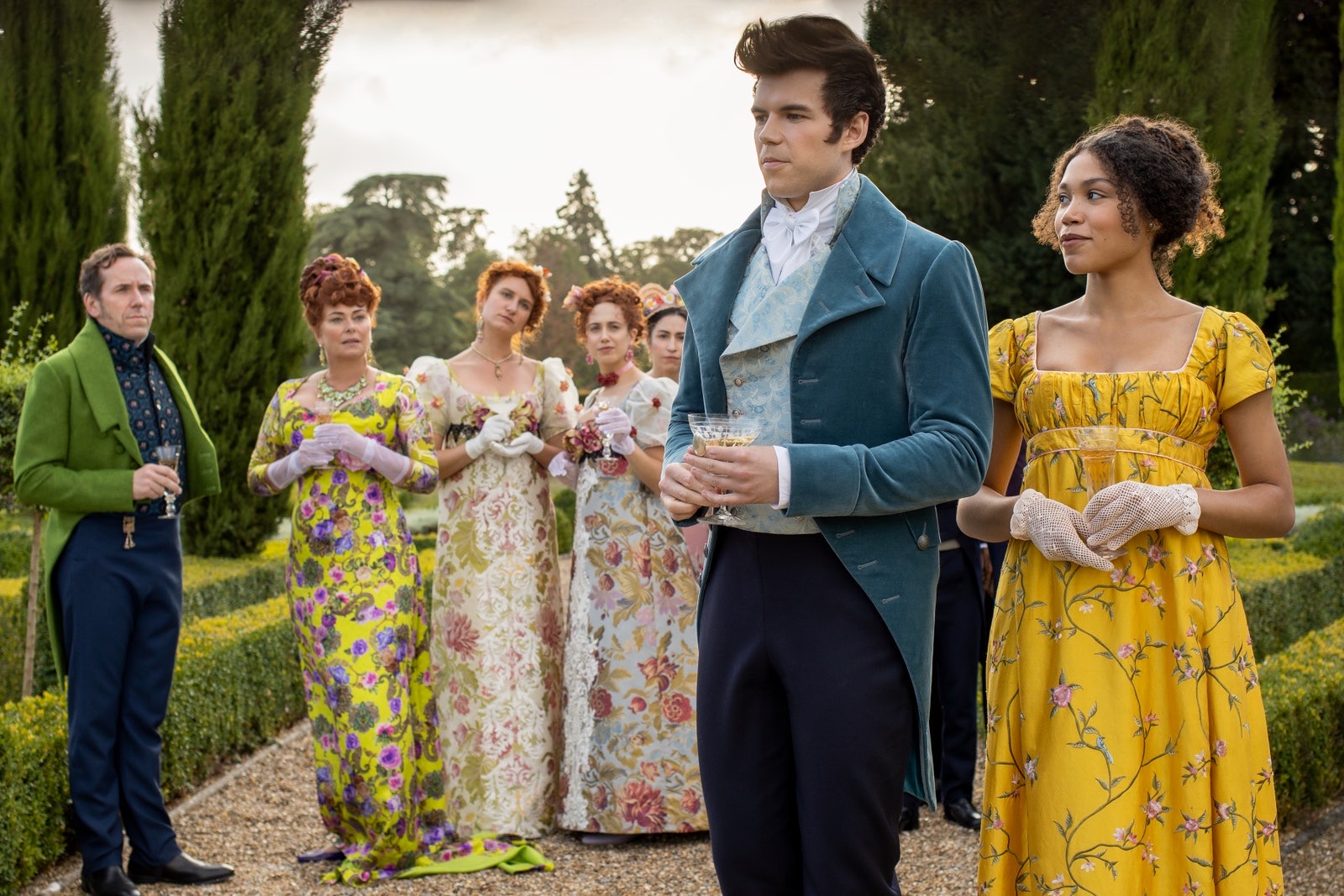Netflix’s new period-drama Bridgerton is a 19th century series set in Regency England. Despite the hype surrounding it’s protagonists’ scintillating romance, the enticing cast and juicy drama, it was the magnificent gowns, regal attires, and over-the-top headpieces that caught my eye.
The large team of costume designers amp up these characters with opulence and extravagance, while maintaining authenticity blended with modernization. This article explores how the costumes of the show match up to their historical counterparts based on four main groups: upper-class women, upper-class men, royalty, and the working class.
Upper-class Women:
The first season of Bridgerton is set in 1813, during the early years of the Regency era. Daphne Bridgerton, the female protagonist, is frequently seen wearing long gowns in her family’s colours with a high waist. Daphne appears to be on trend historically for the Regency period, matching the styles of upper-class ladies based on paintings from the era.
In the 1800’s, women were leaving behind the tight corsets of the Victorian era and swapping them for high waisted, free-flowing silhouettes. There is accuracy in Bridgerton as far as the cuts of the dresses, silk gloves, and silhouettes go. Costume designer Ellen Mirojnick wanted to use these styles but add a new flare to the colours and materials, she said in her interview with Vogue.
“It was about looking at the different silhouettes and shapes while knowing that this had to be aspirational, as opposed to historically accurate. We knew that we had to shift the colour palette and the fabrications,” Mirojnick stated.




(Images courtesy of Ladies’ Monthly Museum and Netflix)
The stark contrast in colours of the two main families in the show, the Bridgertons and the Featheringtons, represent new and old money, according to Mirojnick.
The Bridgerton family is seen in cooler pastel tones of blue, representing their sophistication and high place in society. This is juxtaposed with the Featheringtons, who prefer eclectic neon shades of yellows, pinks, purples and greens, unusual for the Regency era. This parallels the Featheringtons’ desire for attention while ironically appearing like a muster of peacocks.


(Courtesy of Netflix)
Upper-class Men:
Men’s fashion ditched the frills and colours come the Regency era and adopted a simpler look. The men of Bridgerton are often seen in a three-piece suit: the waistcoat, coat, and trousers. Based on paintings from the era, the men’s attires look to be historically accurate with silhouettes closely mimicking fashion plates from that period.


(Courtesy of Wikipedia and Netflix, respectively)
Royalty:
The only character in the series based on a person from history is Queen Charlotte, whose dresses divert from the Regency style and can be seen wearing structured gowns with thicker petticoats and longer sleeves. The style matches with historical portraits of the queen from the late 1700s, and makes sense for the queen given that she was born in 1744 and would likely prefer fashion from the Victorian era.


(Courtesy of Netflix and Allan Ramsay, respectively)
Working Class:
The biggest difference in the costumes between the privileged and their housemaids is the materials, which is historically accurate. Working women needed clothes that would last and not have to be changed for every single activity such as walking, carriage riding, horseback riding, along with daytime and evenings.


(Courtesy of John Lambert and Netflix, respectively)



What do you mean with that the queen would prefer fashion from the victorian era?
The queen Victorias reign came after regency.. The Bridgerton Queen is dressed in rococo style, as a older and more conservative aristocrat would.
..And a three piece suit for men consists of waistcoat, coat and trousers…
Please do not say the Regency period dress left behind the tight corsets of the Victorian era and that Queen Charlotte would likely prefer fashion from the Victorian era. Victorian dress was still two decades in the future. It was the tight bodices of the Georgian period that were being left behind.